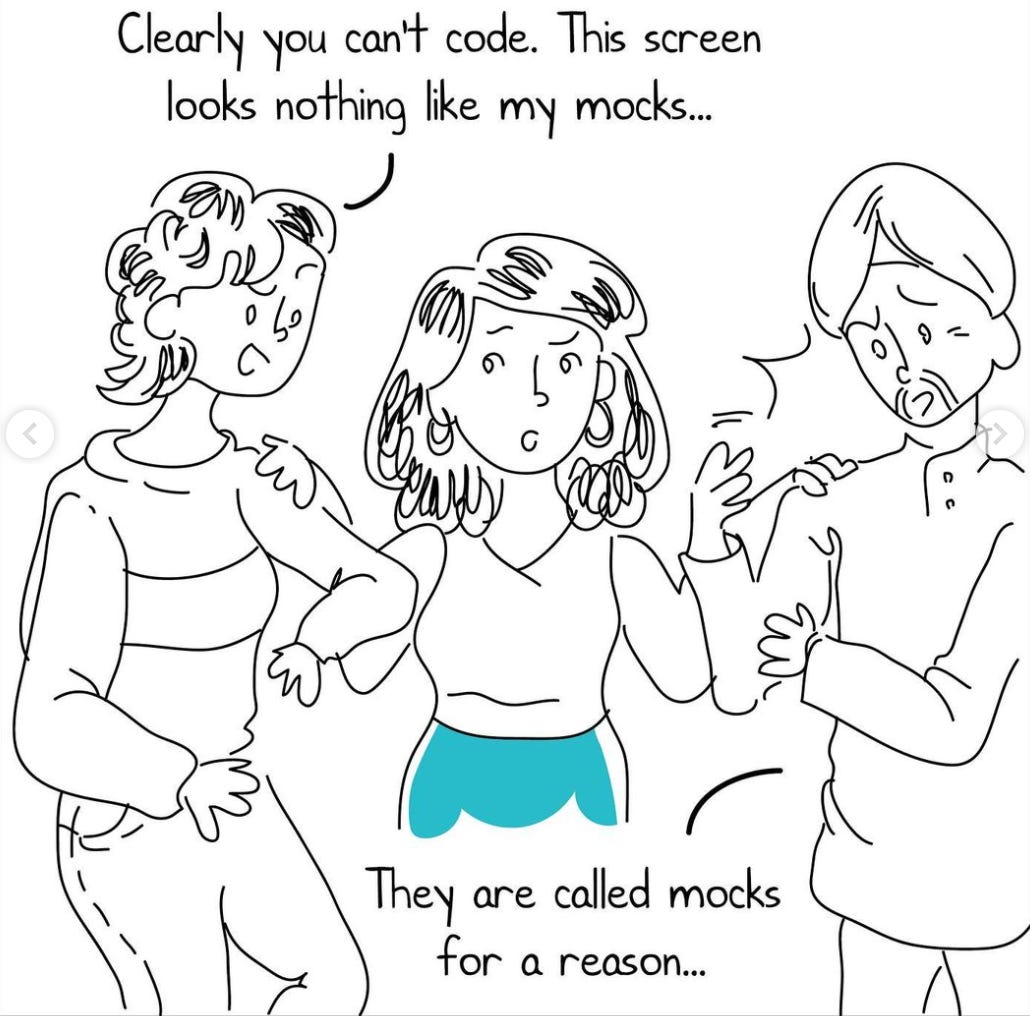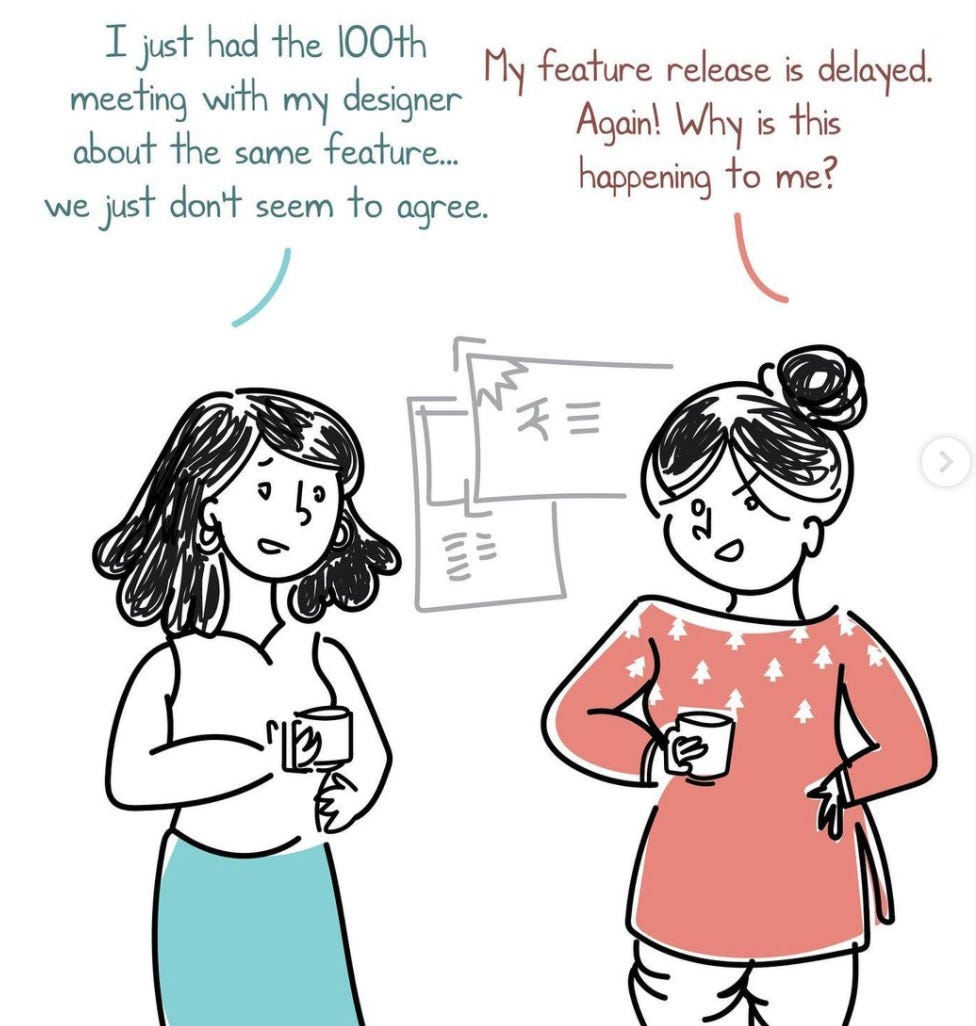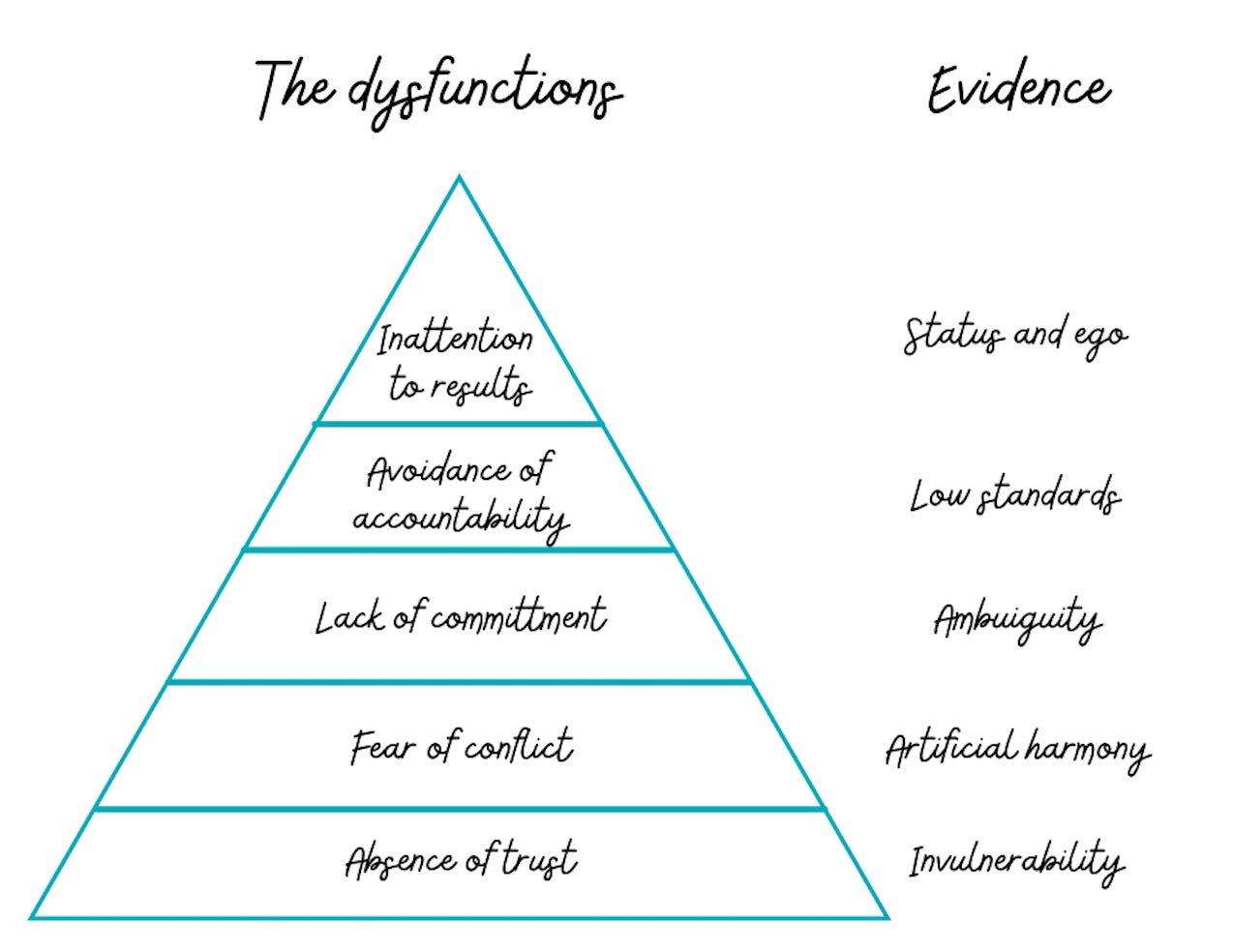📖 Book review: The five dysfunctions of a team
Product management is a fairly lonesome job, even if you manage other PMs. However, officially or not, PMs need to build great teams to be successful. In the book The Five Dysfunctions of a Team, Patrick Lencioni talks about the essence of collaboration within a team. And there are plenty of take-aways for product managers.
This book will benefit you if you are - dealing with conflicts in your team, your team is misaligned, or is dealing with lack of participation or creativity. Even if not, it’s a great read to bolster confidence and focus for the team. While it may appear to be for team leads, an understanding of the pitfalls is beneficial to all team members.
The five dysfunctions of a team has a voluminous first section that tells a tale of a company in Silicon Valley, its takeover by a new CEO, Catherine, and how she transforms the leadership team to start delivering results. The second section of the book condenses the five dysfunctions she identifies.
Why are teams dysfunctional?
Teams are made of various individuals that all have their own strengths and weaknesses, vulnerabilities and egos. Dysfunction does not arise because people have poor intentions. It usually arises because they are not managed well, individually or as a group. If you want to understand the dynamics in your team, start by asking these five questions about your team:
Do your team members openly and readily disclose their opinions?
Are your team meetings compelling and productive?
Does your team come to decisions quickly and avoid getting bogged down by consensus?
Do your team members confront one another about their shortcomings?
Do your team members sacrifice their own interests for the good of the team?
If you’ve answered ‘No’ to any of these questions, your team is likely suffering from at least one of the five dysfunctions.
The five dysfunctions
1.Absence of trust: The first dysfunction comes from the team’s unwillingness to be vulnerable within the group. Trust is the confidence that one’s team members have good intentions, and there is no reason to be cautious around the team. It requires team members to make themselves vulnerable to one another, and be confident that their vulnerabilities will not be used against them. These vulnerabilities may include weaknesses, skill deficiencies, interpersonal shortcomings, mistakes, and requests for help.
Overcoming the dysfunction: Building trust is a hard problem to solve, but it is the foundation for resolving all other dysfunctions. It requires shared experiences over time, multiple instances of follow-through and credibility, and an in-depth understanding of the unique attributes of team members. As the member of the team, set good examples by asking your team for help, openly admitting your own weaknesses and limitations, and owning up to mistakes.
2.Fear of conflict: Teams require productive conflict in order to grow, yet conflict is generally considered taboo. Teams that lack trust do not engage in unfiltered, passionate debates about important issues, instead have veiled discussions and turn to back channel comments or personal attacks. In a work setting where team members do not openly air their opinions, there is a lot of posturing and precious time is wasted, resulting in inferior decisions.
Overcoming the dysfunction: As a leader, define what healthy conflict looks like, and establish that conflict is welcome. Veer the team towards correction when the conversation starts to get unhealthy. You can also “mine for conflict” by starting a meeting with a bad idea to check if everyone will agree to avoid conflict, and use this to open up healthy discussion. Or, assign a devil’s advocate in a meeting, or use pro and con lists for ideas to get people to open up and share alternative perspectives.
3.Lack of commitment: Without conflict and having aired or debated their opinions, team members often feign alignment and do not truly commit to decisions. This creates an environment where ambiguity prevails, and can make the best employees lose trust and become disgruntled.
Overcoming the dysfunction: Clarity and closure are important to overcome this dysfunction. As simple as it sounds, setting clear deadlines, reviewing key decisions at the end of every meeting, and clearly communicating the message to avoid ambiguity are key actions you can take. to achieve clarity and move to the next level. As a leader, push the group for closure around issues, not necessarily consensus, as well as adherence to schedules that the team has set.
4.Avoidance of accountability: When teams don’t commit to a clear plan of action, they avoid calling out their peers on actions and behaviours that may hurt the team or be counterproductive. This leads to mediocrity, missed deadlines and poor performance.
Overcoming the dysfunction: The most effective way of maintaining high standards of performance on a team is peer pressure. Allow your team to call out instances of unproductive behavior. To do this bring clarity on ownership and deliverables, review progress and shift from individual rewards to team rewards.
5.Inattention to results: When individuals are not accountable, they naturally tend to put their own needs like career growth or recognition ahead of the goals of the team. This is not necessarily bad unless the two do not align, causing the business to suffer.
Overcoming the dysfunction: The sure shot way of ensuring that teams stay laser-focused on the larger objective is to make the results clear and understood, and reward only the behaviour and actions that contribute to those results.
Ultimately, good teamwork comes down to investing in relationships, and practicing the principles consistently over time to achieve results.
Review score: We rate the book 4 on 5. The first section reads fast since it is a story, and it's always easier to grasp lessons in story format. We docked a point because while there is advice for managers and leaders, there are fewer suggestions for what team members can do to improve team work, collaboration and be an engaged, creative and responsible team member.
Purchase the Kindle version of the book here.






